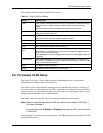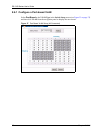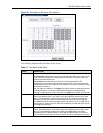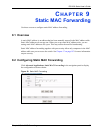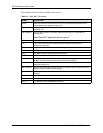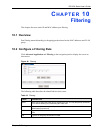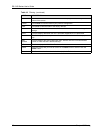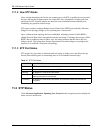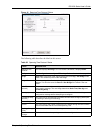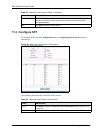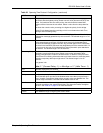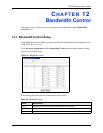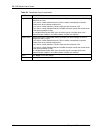
ES-2108 Series User’s Guide
Chapter 11 Spanning Tree Protocol 87
CHAPTER 11
Spanning Tree Protocol
This chapter introduces the Spanning Tree Protocol (STP).
11.1 Overview
STP detects and breaks network loops and provides backup links between switches, bridges or
routers. It allows a switch to interact with other STP-compliant switches in your network to
ensure that only one route exists between any two stations on the network.
11.1.1 STP Terminology
The root bridge is the base of the spanning tree; it is the bridge with the lowest identifier value
(MAC address).
Path cost is the cost of transmitting a frame onto a LAN through that port. It is assigned
according to the speed of the link to which a port is attached. The slower the media, the higher
the cost.
On each bridge, the root port is the port through which this bridge communicates with the root.
It is the port on this switch with the lowest path cost to the root (the root path cost). If there is
no root port, then this switch has been accepted as the root bridge of the spanning tree
network.
For each LAN segment, a designated bridge is selected. This bridge has the lowest cost to the
root among the bridges connected to the LAN.
Table 20 STP Path Costs
LINK SPEED RECOMMENDED VALUE
RECOMMENDED
RANGE
ALLOWED RANGE
Path Cost 4Mbps 250 100 to 1000 1 to 65535
Path Cost 10Mbps 100 50 to 600 1 to 65535
Path Cost 16Mbps 62 40 to 400 1 to 65535
Path Cost 100Mbps 19 10 to 60 1 to 65535
Path Cost 1Gbps 4 3 to 10 1 to 65535
Path Cost 10Gbps 2 1 to 5 1 to 65535



